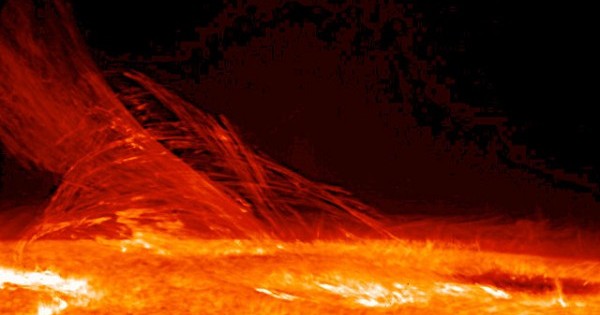
The Earth was once not—it was nothing; it was a dollop in a whirl of gas, some part of the whirling remains of some ancient blown sun. It’s easy to think of this before-Earth, before-Sun, before-solar-system time as unreal, but it’s as real as the Pagliacci pizza I consumed last night for supper. It’s history, even if hard to imagine.
Here’s what science has worked out to date.
Our space in space was once a cloud of cold gas. Very cold gas. Not too thick. Mostly hydrogen and helium. Then a shock, likely the explosion (supernova) of a nearby star, caused this slow-spinning mass of gas to spin faster. Gravity pulled it thicker, which made it hotter.
This gas spun until it collapsed into itself. The dense center got so hot it vaporized all solid objects and particles. The hot vapor formed a spinning disc around an even hotter center. Our solar nebula. At the edges, then, particles cooled and took their solid form. Billions of planetesimals formed—baby terrestrial planets about a mile across.
Now the center of the solar nebula collapsed. Here was our protoSun.
The protoSun spun. Gravity pulled in stardust, and the center grew hotter and heavier. What happened next has been called “the seminal event of the solar system.” The Sun ignited.
Meaning what? This was no bonfire in the woods. This was (and is) nuclear fusion. Hydrogen, with its single proton, begins fusing into helium, with its two protons and two neutrons. (Four hydrogen atoms fuse to become one helium atom.) The energy left over (because one helium atom is lighter than four hydrogen atoms) is ejected as sunlight. In the words of that great old George Harrison song, “Here comes the sun.”
Planetesimals colliding became the terrestrial planets. Because they formed on the edge of a disc, our planets continue to rotate more or less on the same plane. The first to form were Venus and Earth, according to The Earth Machine by Edmond A. Mathez and James D. Webster (who wrote their book to accompany an exhibit at New York’s American Museum of Natural History).
Since no one here was there, how do we know any of this? Well, there’s the physics of spinning hot gasses. There are computer simulations that pit measurements against the laws of physics and let them run. There are new stars forming under our eyes (see the Hubble website for stunning views of the Orion nebula).
And there are meteorites, stones that fall from the sky, the Rosetta Stones of our solar system. Often they drop to Earth essentially unchanged from primal times. They are, according to radiometric dating, about 4.5 billion years old. The oldest rocks in our solar system tell how old our solar system is. (Rocks in the Earth’s crust—perpetually worked by weather and erosion and plate tectonics—are younger.)
At first, most likely, the earth was molten. Heavier elements such as iron sank through lighter elements to form the core. Massive volcanoes outgassed water vapor, carbon dioxide, sulfur, and nitrogen. Earth’s early atmosphere.
Among planetesimals crashing in, one collision was something tremendous, also a seminal event. A Mars-sized object slammed home. Some of its material joined Earth; the rest, along with bits of smashed crust, went into orbit. In due time these orbiting chunks met up and merged and became the moon.
The Earth cooled. The gas that is water vapor turned into the liquid that is water. (Comets also brought water.) And so the rains began. And so the oceans filled.
This is not doctrine, but current cosmology. There will be tweaks; that’s how science works. But so far, this is our creation story.

